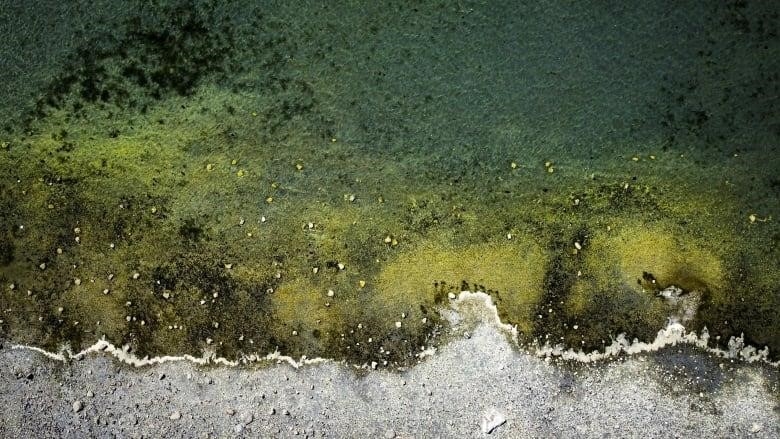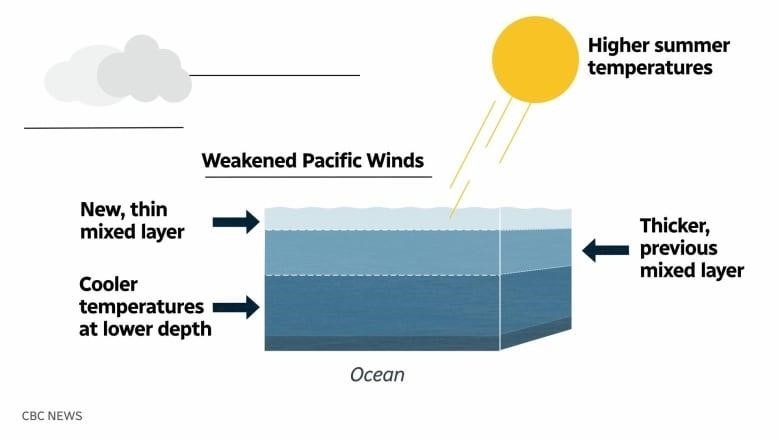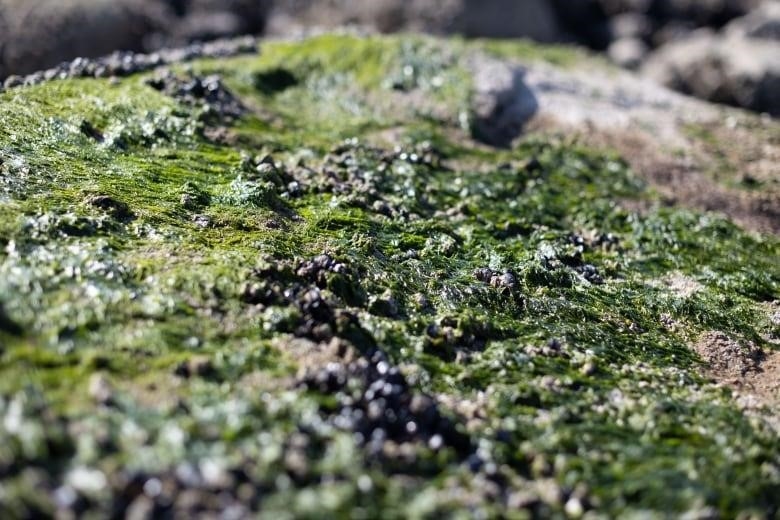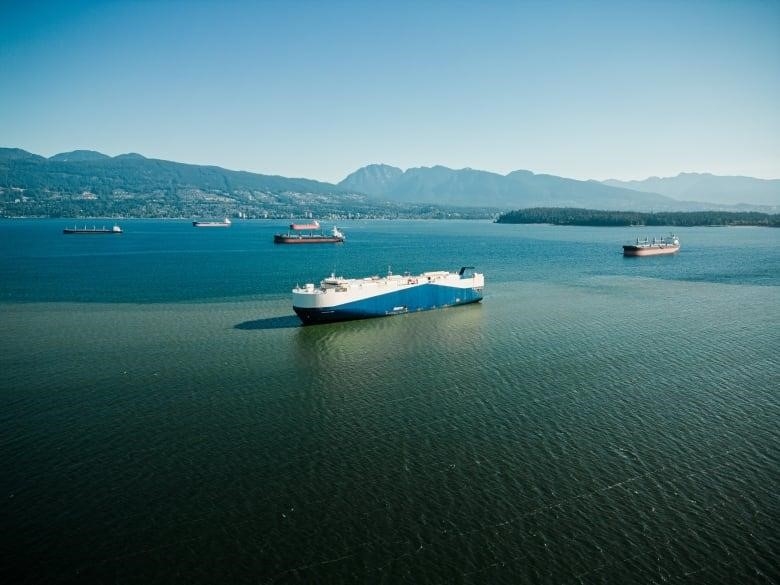
Pacific winds have pushed a mass of warm water that began to warm up in May toward the coast
A mass of warm water that has been warming up the Pacific for months has now reached B.C., raising concerns about how these high temperatures could affect the marine life that lives along the coast.
In May, the Pacific marine heat wave began to form about 1,600 km off the coast, but in the past few weeks, it has moved west toward B.C. and Oregon. The warm water mass, which was about 4 million square kilometers in size, was expected to reach the coast of British Columbia by the middle of August.
In recent weeks, surface temperatures in the warm water mass have been up to five degrees higher than usual. This led the U.S. National Oceanic and Atmospheric Administration to call the heat wave “extreme,” which is the highest level of classification.
Marine heat waves can cause extreme weather, make sea levels rise, and speed up the melting of ice caps, all while putting marine life in danger.
Here’s what you need to know about the one that has made it to the waters of British Columbia.
How do heat waves in the ocean start
Marine heat waves happen often in the Pacific, but climate change is making them happen more often and get worse.
Most Pacific marine heat waves start when summer temperatures rise and high winds in the Pacific slow down, which quickly heats up the surface of the water.
The top layer of the ocean gets thinner, making it harder for it to mix with the cooler water below. This makes it easier for the sun to heat up the ocean, which causes a marine heat wave.

Scientists are keeping an eye on more than just the marine heat wave going on in the Pacific right now.
Warm water masses have also been seen in the North Atlantic, the Gulf of Mexico, and the Caribbean Sea. This summer, the water off the coast of Florida got as hot as a hot tub. The temperature reached 37 C.
Researchers are also worried about the sudden warming because the oceans are a big part of how well the Earth can absorb and store heat.
Studies have found that, over the last 50 years, the oceans have taken in about 90% of the extra energy and heat that was put into the climate system by greenhouse gas emissions.
What effect does it have on marine life
Even though swimmers may like warm water, it can be bad for coastal ecosystems and sea life that is used to cooler temperatures.
Martin Haulena, the head veterinarian at the Vancouver Aquarium, said that the marine heat wave will affect the whole ecosystem, from kelp to shellfish, seabirds, and the larger marine mammals that live in B.C. waters.
“Water that is warmer than water that is cold usually has a lot less oxygen in it. So your basic productivity goes down, which means that many of the main food sources for many of the animals that marine mammals eat start to become less common,” said Haulena.
“So that could be a problem for everything, even the biggest whales.”
WATCH | How the B.C. coast is being affected by a marine heat wave:
Haulena said that temperatures that are warmer than usual can also bring new species farther north. These new species may bring pathogens that animals in B.C. are not used to.
“Viruses, bacteria, fungi, and other things like that could be brought in.Animals might not know how to deal with these diseases, which could have a bigger impact on that population. “Warmer water can also make things like biotoxins grow,” he said.
The animals and sea life that live along the coast of B.C. have been through hot weather before. The 2021 heat dome caused temperatures to rise above 40 C and water temperatures to reach up to 56 C. As a result, billions of sea creatures along the coast died all at once over the course of three days.
Researchers have said that even though the ecosystem was messed up a lot, there are early signs that seaweed, crustaceans, and shellfish are making a comeback.

How long will the heat wave in the ocean last
It’s hard to say how long a marine heat wave will last, but in the Pacific, they usually end in October when cooler weather comes back.
This marine heat wave could last longer than usual because this year is expected to be an El Nino year.
El Nino is a complex weather pattern that happens over and over again. It usually makes the Pacific region warmer and milder, but it can also cause very bad weather.
In 2014, El Nino caused the Blob, a 1,600-kilometer-wide patch of warmer-than-usual water that was linked to a number of strange things in the Pacific, such as a huge bloom of toxic algae.

Even though it’s too early to tell if El Nino conditions will make this marine heat wave worse or make it last longer, William Cheung, director of UBC’s Institute for the Oceans and Fisheries, said it’s important to study what these conditions will do to our shores.
“One of the things scientists have said and predicted is that these heat waves will happen more often and be stronger in the future because of climate change,” he said.
“So what we’re seeing now and how it’s affecting us gives us a glimpse of what we may see more often in the future—and what may even become normal in the near future.”
